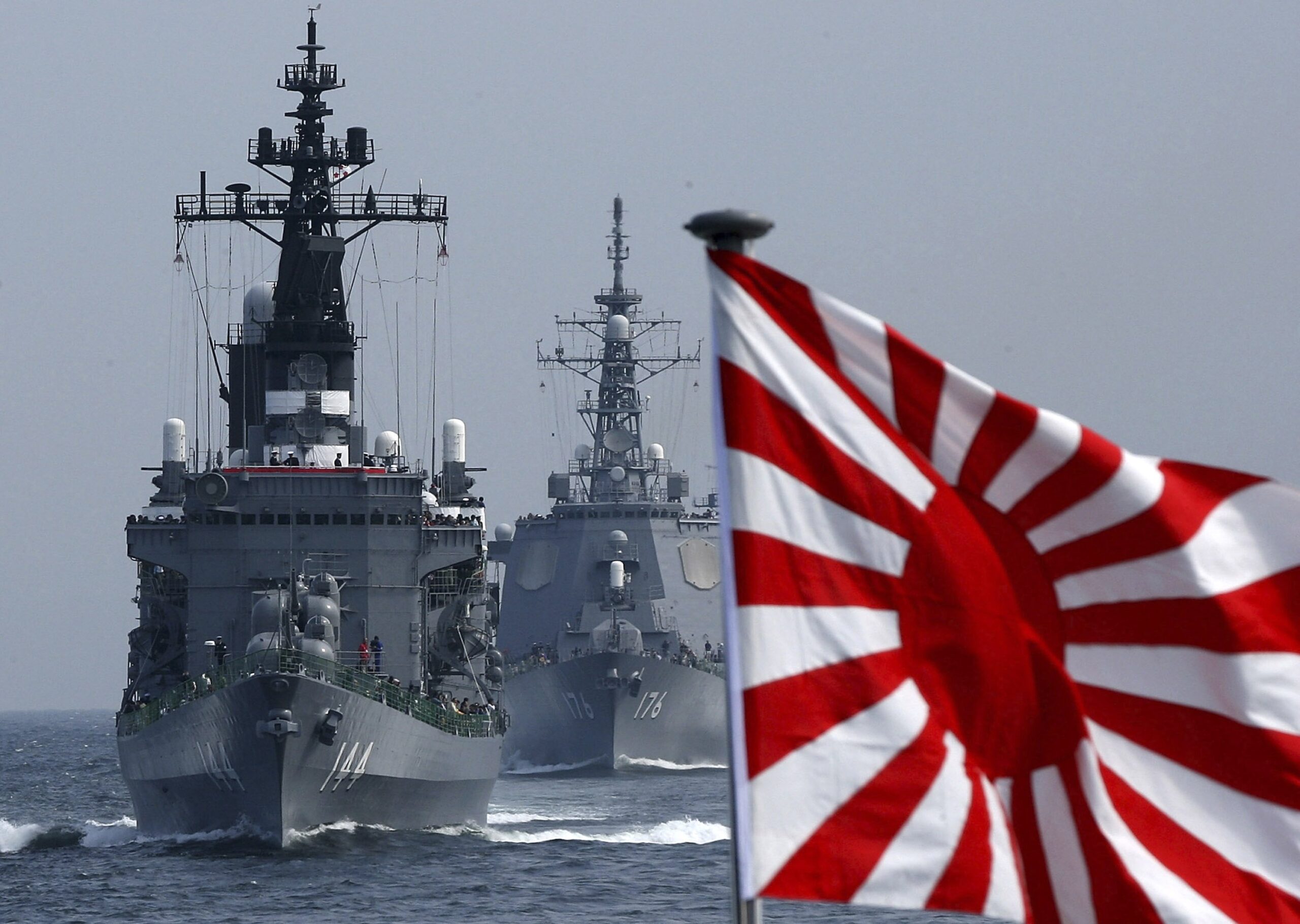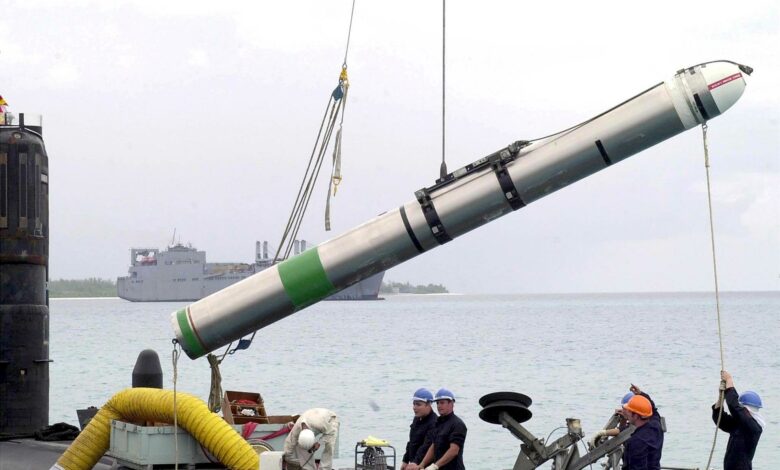News
Japan Goes on the Offensive Against China and North Korea

In a significant departure from its postwar policy of strictly self-defense, Japan adopted a national security strategy on Friday, declaring plans to have preemptive strike capability and cruise missiles within years to give itself a more offensive footing against threats from neighboring China and North Korea.
With China, North Korea, and Russia directly to its west and north, Japan “faces the severest and most complicated national security environment since the end of the war,” according to the strategy, which named China as the “biggest strategic challenge” — ahead of North Korea and Russia — to Japan’s efforts to ensure peace, safety, and stability for itself and the international society.
The ability to strike back is “indispensable” as a deterrent to discourage enemy attacks, Prime Minister Fumio Kishida said at a news conference Friday, calling it “a major change in Japan’s postwar security policy.”
“When threats become reality, can the Self-Defense Force fully protect our country? “To be honest, the current (SDF capability) is insufficient,” Kishida stated.
According to the strategy, Japan’s defense spending will increase to about 2% of GDP by 2027, totaling 43 trillion yen ($320 billion), 1.6 times the current five-year total.
Kishida stated that the new target establishes the NATO standard for defense spending, a budget increase that has been a policy priority for him since taking office in October 2021.
Because of its wartime history as an aggressor and the national devastation that followed its defeat, Japan’s postwar policy prioritized economic growth over security, relying on American troops stationed in Japan under their bilateral security agreement.
Defense buildup in Japan
Japan’s defense buildup has long been regarded as a sensitive issue both at home and in the region, particularly among Asian victims of Japanese atrocities during WWII. However, experts say that China’s growing influence, Russia’s invasion of Ukraine, and the threat of a Taiwan emergency have prompted many Japanese to support increased capability and spending.
“The Taiwan and Japan emergencies are inseparable,” said Ken Jimbo, a defense expert at Keio University, noting that Japan’s westernmost island, Yonaguni, is only 110 kilometers (70 miles) away from Taiwan.
Rapid advancements in missile technology have made them “realistic threats” in the region, making interception by existing missile defense systems more difficult, according to the strategy. This year, North Korea launched more than 30 ballistic missiles, one of which flew over Japan. China launched five ballistic missiles into waters near the southern Japanese islands, including Okinawa.
According to Chinese Foreign Ministry spokesperson Wang Wenbin, Japan is “ignoring facts, deviating from its commitment to China-Japan relations and the two countries’ common understandings, and groundlessly discrediting China.”
“Hyping up the so-called China threat to justify its military buildup is doomed to fail,” Wang said at a daily news briefing on Friday.
South Korea said Friday that Japan must consult with Seoul before taking any action that would jeopardize Seoul’s national interests, such as exercising its right to counter-strike capability against the Korean Peninsula.
According to the South Korean Foreign Ministry, Japan’s security policy is “desirable” in order to contribute to regional peace and stability.
Fundamental defense strengthening
The counter-strike capability mentioned in Japan’s new strategy, which was approved alongside two defense strategy documents by Kishida’s Cabinet, will not be implemented until at least 2026, when the powerful long-range Tomahawk missile, favored by the US and UK, is deployed. Begin with the navies.
This effectively ends Japan’s 1956 government policy of ignoring counter-strike capability and only recognizing it as a constitutional last-ditch defense. “Beginning with fundamental defense strengthening, we must be fully prepared for the worst-case scenario,” the new strategy stated.
Japan intends to spend 5 trillion yen ($37 billion) by 2026 to deploy foreign-developed standoff missiles such as Lockheed Martin’s Tomahawk and Joint Air-to-Surface Standoff Missile, while Japan’s Mitsubishi Heavy Industry is developing a surface-to-ship guided missile. Japan will also deploy several standoff missile units in undisclosed locations to respond quickly to potential attacks.
Japanese defense officials said they are still negotiating the purchase of Tomahawk missiles.
After raising defense cooperation with Australia to semi-ally levels in recent years, Japan hopes to put the new capability to the test in joint exercises hosted by Australia and involving US militaries as well.
Counter-strike capability for Japan
U.S. Japan’s new strategy, according to National Security Advisor Jake Sullivan, “sets forth the vision of Prime Minister Kishida and the Japanese people for a broad and strong community of partners and allies in the region.”
“Japan’s goal of significantly increasing defense investments will also strengthen and modernize the United States-Japan alliance,” he added.
Japan maintains its sole defense policy, but “long-range cruise missiles represent a threshold capability that will fundamentally change Japan’s approach to deterrence,” according to Christopher Johnstone, senior advisor and Japan chair at the Center for Strategic and International Studies.
“An effective Japanese counter-strike capability would pave the way for far deeper command-and-control integration with the US than exists today,” he added.
Japan has stated that it will maintain its pacifist principle of high standards for weapons equipment and technology transfer. However, some relaxation is planned to allow currently restricted exports of offensive equipment and components, including those of the next-generation fighter jet Japan is developing in collaboration with the United Kingdom. and Italy, in order to boost the country’s defense equipment industry.
The Japanese government has renamed preemptive strike capability “counter-strike capability,” presumably to emphasize that it is for self-defense.
Despite the strategy’s nuanced wording, the main threat is China, for which Japan has had to prepare “by using North Korea’s threat as a cover,” according to retired Admiral Tomohisa Takei of Japan’s navy.
The government claims that using it in response to signs of an impending enemy attack is constitutional. However, experts say that it is extremely difficult to do, and Japan must advance its cybersecurity and fully rely on US intelligence to detect early signs of an enemy missile launch preparation in order to effectively abort the attack without risking blame for making a first strike.
It will necessitate a deeper Japan-US relationship. According to Johnstone, the alliance will work together to develop the capability.
According to experts, including former Defense Minister Shigeru Ishiba, the definition of the enemy’s intent to attack is ambiguous, and preemptive strikes may be considered first strikes.
Japan and the United States held a major joint military exercise in southern Japan last month to improve the readiness of the allies.
Source: AP

































